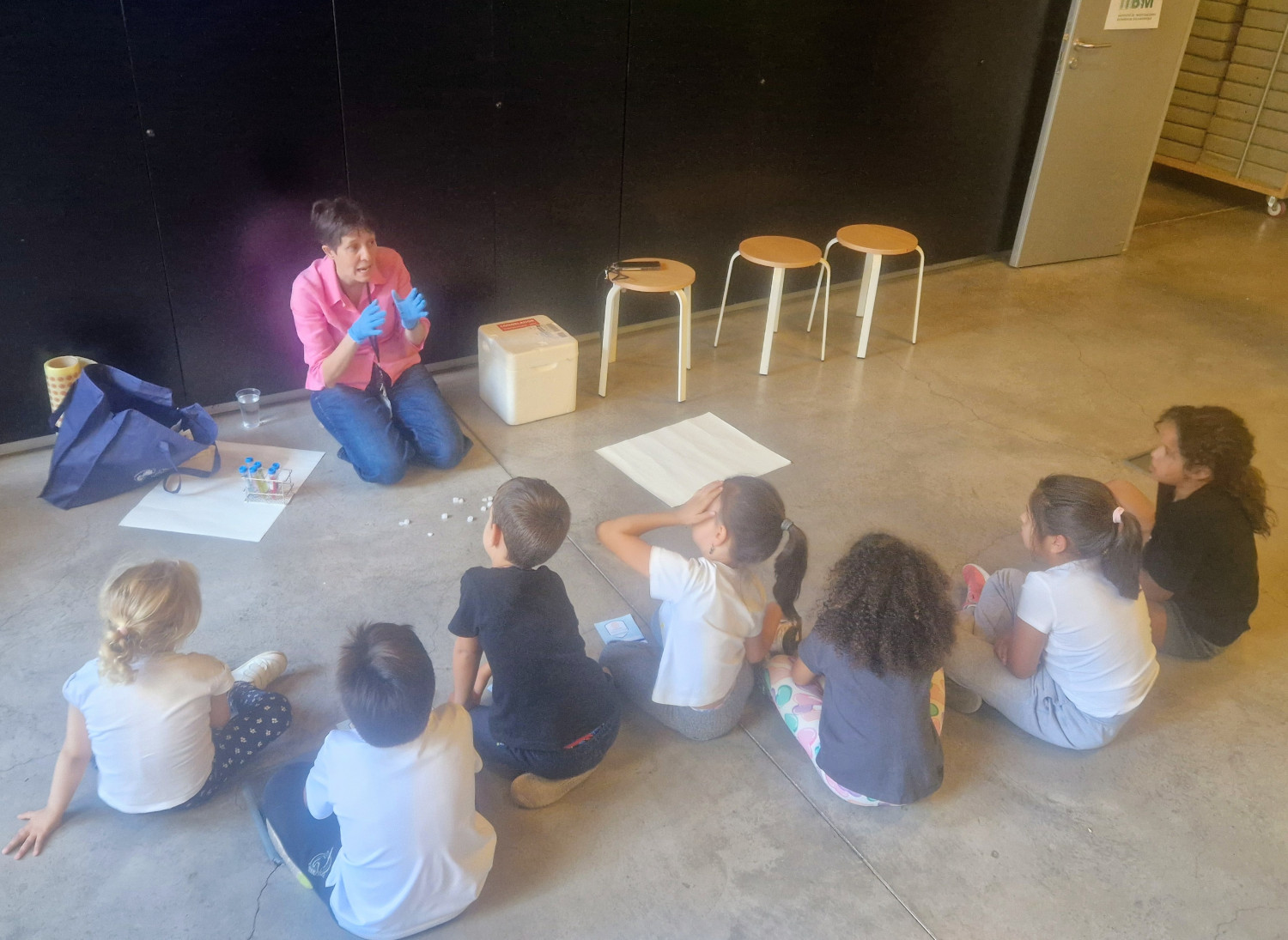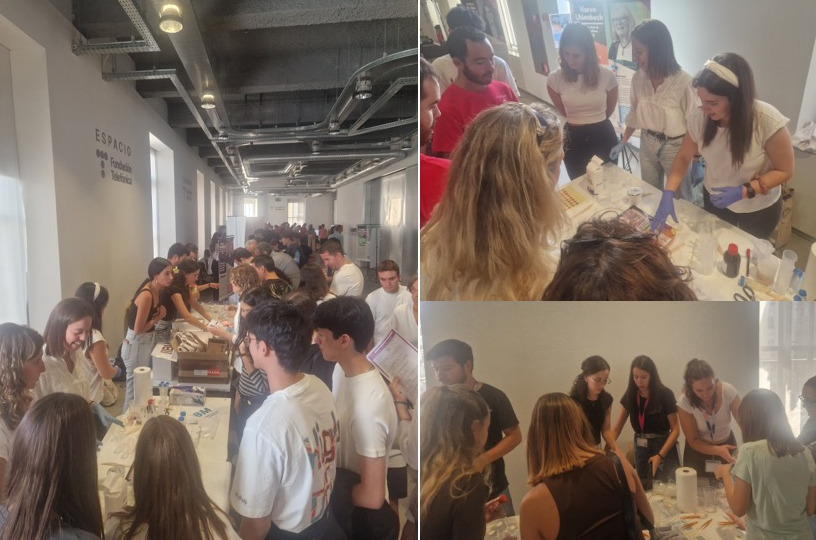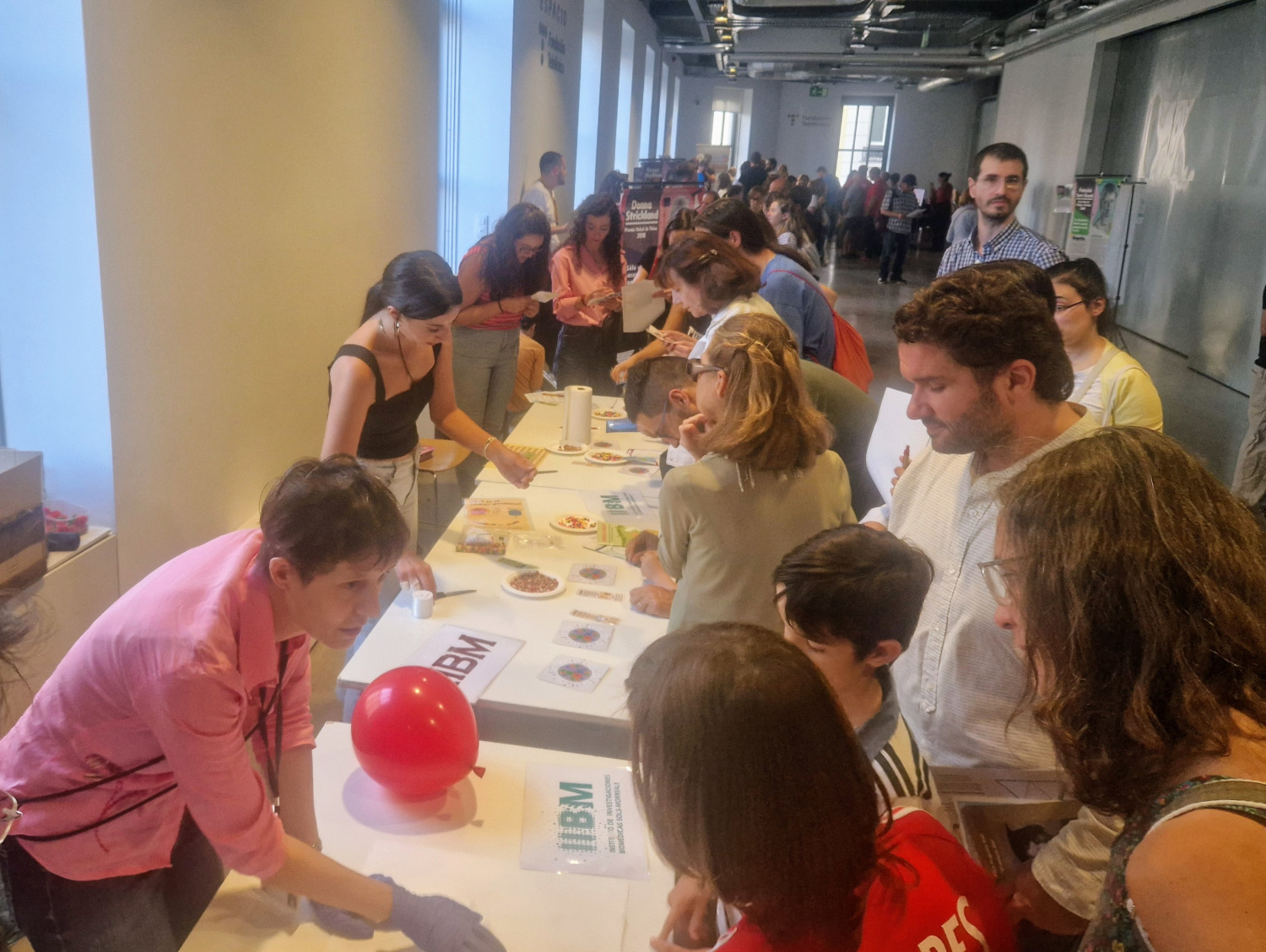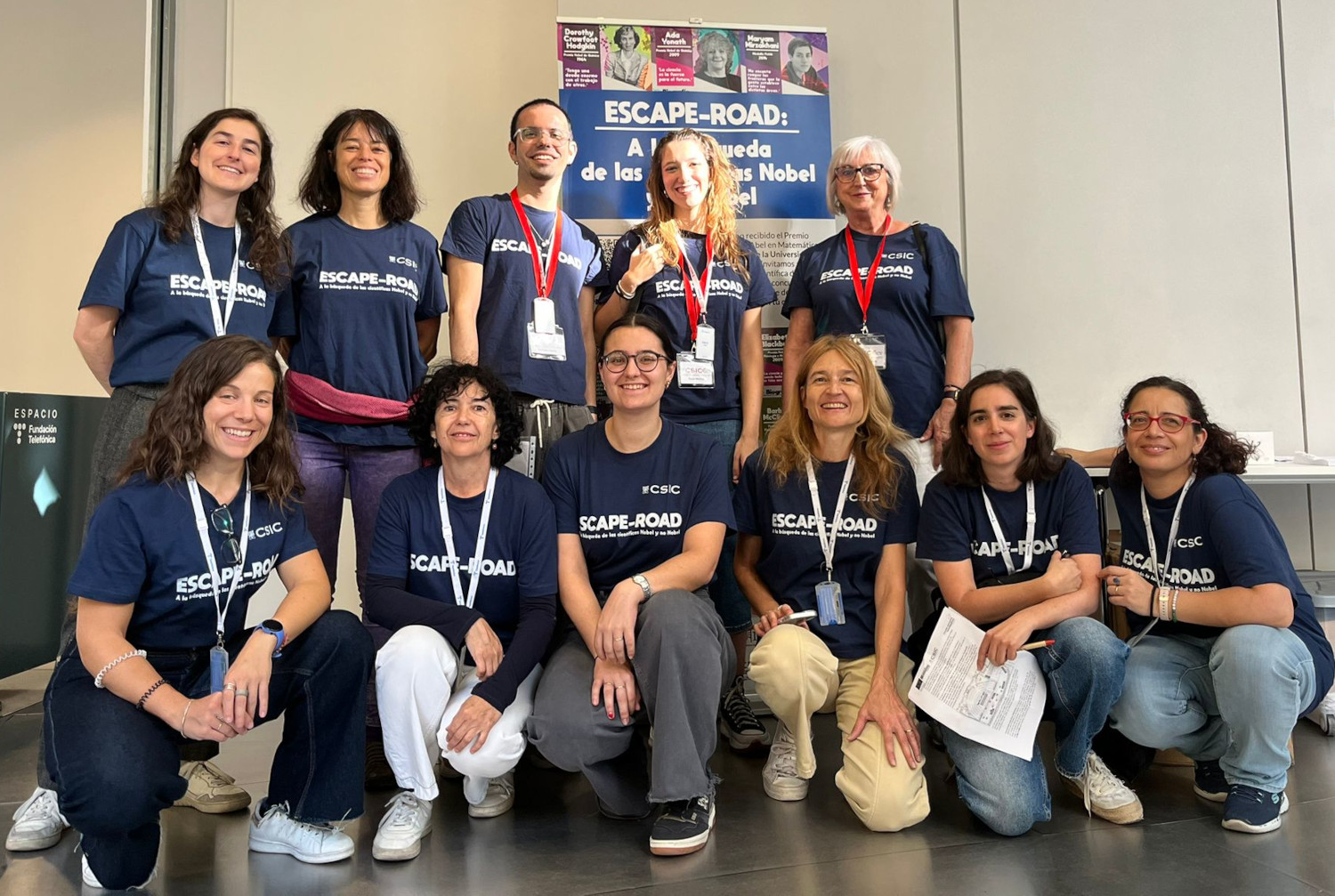The Instituto de Investigaciones Biomédicas Sols-Morreale (IIBM), together with nine other CSIC centers on the Campus de Cantoblanco of the Universidad Autónoma de Madrid, participated in the European Researchers’ Night 2025, held last Friday, September 26, at the Espacio Fundación Telefónica, in the very heart of Madrid.
Once again, top-level science took to the streets in this large-scale event, which filled every corner of the venue with curiosity, experiments, and scientific outreach.
A day full of science for all ages
In the morning, a science fair was held, organized in different areas for students from Primary, Secondary (ESO), Baccalaureate, and Vocational Training.
In the afternoon, between 16:30 and 20:00, activities were offered for the general public, especially families with children:
• Science Fair, with demonstrations from almost all areas of knowledge.
• Workshops in closed rooms, covering biology, mathematics, physics, and even a storytelling session for children.
• Talent Show, a contest of monologues full of humor, wit, and creativity.
• Closing concert, with Las Biolocas, who performed popular songs with playful biological lyrics.
In addition, both in the morning and afternoon, participants enjoyed the Escape Road: in search of Nobel and non-Nobel women, a game in which they learned about the lives and contributions of great women scientists from around the world.
As a novelty, this year a Scientific Passport was distributed, completed with stickers from each CSIC center after finishing the activities. Those who collected all the stickers received a gift at the end of the afternoon. The sticker from the IIBM, a beautiful cell, was one of the most requested.
The scientific activities of the IIBM
The IIBM presented five activities that attracted great interest and gathered a diverse and constant audience: children, teenagers, university students, and adults.
• Story-workshop: “Serafín and the emotions”. Cristina Peña Maroto captivated the youngest participants with an experimental storytelling activity, where test tubes and color changes helped them discover how the six basic emotions are represented. Through Serafín’s story, children traveled through the “village of fear,” the “village of joy,” or the “village of sadness,” learning science while giving color to feelings.

Meanwhile, on another floor of the Espacio Fundación Telefónica, the first two outreach workshops of the IIBM were held:
• A journey through nutrients, with Silvia Calero Pérez, Beatriz Herrero Fernández, and Elena Carceller López.
• Extract the DNA from a strawberry, led by Paula Guillén Morales, Iván López García, Patricia Delgado Aliseda, and Susana Priego Gutiérrez.
In these workshops, participants learned in a practical way what DNA is and how to extract it from a strawberry using everyday materials. After the extraction, they were able to observe the white strands of genetic material and take home an Eppendorf tube as a scientific souvenir. In addition, through simple experiments with common foods and chemical reagents, they discovered which nutrients predominate in each sample, learned how to interpret nutritional labels, and reflected—visually and in a fun way—on the quality of what we eat.

After two intense hours of outreach, it was the turn of two researchers already experienced in the European Night: Soledad Bárez López and Cristina Peña Maroto, with their workshops Build your protein! and The magic of dry ice, respectively.
Those who visited the IIBM stand learned how our cells read DNA to produce proteins, a process essential for life and biomedical research. With colored beads, both large and small, they created their own protein bracelet. Nearby, with gloves, balloons, and bubbling volcanoes, they visually and playfully demonstrated the properties of sublimation. Science was transformed into pure magic for both children and adults, who looked on in amazement as balloons inflated by themselves when small pellets of dry ice were shaken inside.
The four hours passed in a flash, and the IIBM stickers almost ran out thanks to the enthusiasm of the audience.

The value of volunteering
A fundamental role was played by our volunteers: Ana Simón García, Celia González Muñoz, Paula Carretero Navarro, Carmen García Montoya, Marina Tapias Martín, Inés Méndez Grande, Beatriz Muñoz Falder, Constanza Contreras Jurado, and Darwin Andrés Córdova.
They carried out essential tasks such as controlling access to closed rooms, assisting with the Escape Road, distributing passports, and guiding visitors at all times. Without their support, it would have been impossible for the event to run so smoothly.

The IIBM warmly thanks all the talleristas and volunteers for their enthusiasm, professionalism, and passion for science. Thanks to them, the institute’s participation in this great outreach event was a resounding success. We hope that next year we can once again count on their energy and add new members from our Institute.
Participation in the European Researchers’ Night was jointly organized by the CSIC centers on the Campus de Cantoblanco: Instituto de Ciencia de Materiales de Madrid (ICMM, coordinator), Instituto de Catálisis y Petroleoquímica (ICP), Centro Nacional de Biotecnología (CNB), Instituto de Investigación en Ciencias de la Alimentación (CIAL), Instituto de Cerámica y Vidrio (ICV), Instituto de Ciencias Matemáticas (ICMAT), Instituto de Física Teórica (IFT), Instituto de Micro y Nanotecnología (IMN), Centro de Biología Molecular (CBM), and the Instituto de Investigaciones Biomédicas Sols-Morreale (IIBM).
The NIGHTMADRID project is coordinated by the Fundación madri+d and funded by the European Union under the Horizon Europe Programme, through the Marie Skłodowska-Curie actions (grant agreement nº 101.162.110).